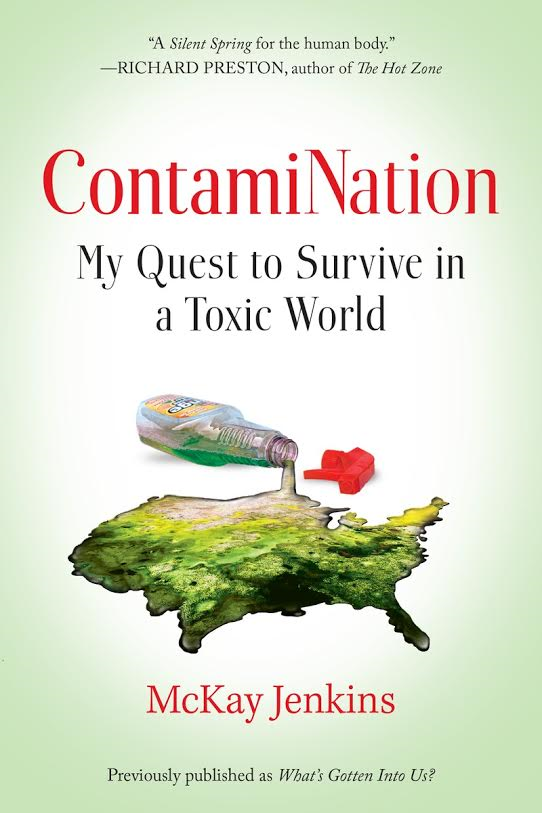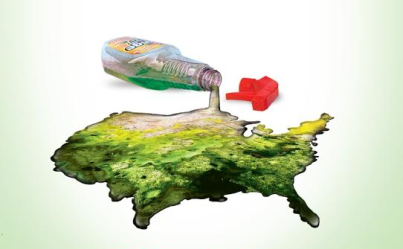Every now and then, when I feel like my University of Delaware students are getting a little sleepy, I ask them to pull out their laptops and tell me what they’ve been putting on their bodies. Every day, I tell them, the average American applies a personal care product — toothpaste, shampoo, moisturizer, lipstick, nail polish – at least a dozen times a day.
Does anybody know what these products are made of? Does anybody know what happens when they are absorbed, or how the interact with each other once they are inside our bodies?
With a few quick clicks, my students find their way to the Skin Deep database, maintained by a nonprofit research organization called the Environmental Working Group. Here, in a few short minutes, they discover that their beloved beauty products contain carcinogens (like coal tar and 1,4-Dioxane); neurotoxins (like lead and mercury); and hormone disruptors (like parabens). Their nail hardeners contain (among other things) formaldehyde (a carcinogen) and a clear, colorless solvent called toluene, which has been linked to both reproductive and developmental problems.
Now they are awake. Now I have their attention.
It’s not just personal care products, I remind them. Walk through your day with different eyes, and you will notice that virtually all our day-today consumer products – rugs and paints and pajamas and water bottles — are made from a vast ocean of synthetic chemicals.
“Looking around the room, I felt suffocated,” a student named Lauren Powell wrote. “The rug, the drapes, the blinds, the couch, the pillow, the water. My own clothing! Toxic chemicals were seeping into me every moment of every day. How do I not feel it? Why does my body have an allergic reaction to completely natural and harmless pollen, yet I can’t really tell that there are flame retardants, pharmaceuticals, and a whole host of unwanted chemicals building up in my body every day, since before I was born? What if I have that baby? What if the toxins in my body cause a birth defect? What if my partner dies at an early age from cancer? What if I die at an early age from cancer?”
My students, of course, are not alone in their use of these products, or in their anxieties about them. The Skin Deep database has found that one-third of personal care products contain at least one ingredient linked to cancer; 45 percent contained an ingredient that could be harmful to reproduction or child development; 60 percent contain chemicals that can mimic estrogen or disrupt other hormones; and 89 percent of the ingredients have never been assessed for safety by the Cosmetic Ingredient Review Board.
How can it be that products used by so many people so many times a day can remain so opaque? Of the 80,000 chemicals in use today, just 200 have ever been tested for their impact on our health. Federal laws overlooking these chemicals haven’t been updated in more than 40 years. How can this be?
Part of the reason has to do with the political clout of the $50 billion personal care products industry, which for decades has successfully limited virtually any form of federal regulation. The journalist Nena Baker, using the Freedom of Information Act, recently discovered that the Food and Drug Administrations Office of Cosmetics and Colors employs just 30 people, and has an annual budget of $3.4 million. In Baker’s hometown of Portland, Oregon, she writes, a single city agency has 40 employees and a budget of $22 million. It’s job? Watch over the city’s traffic lights.
Rather than regulation of the toxic chemicals that go into our products, we get marketing campaigns. Delta Air lines paints a pink ribbon on the side of one of its plane. Football players wear pink cleats, baseball players use pink bats. Baker Hughes, a fracking company, recently announced it would paint its drill bits pink (“Doing Our Bit for the Cure,” the company boasted.) This despite the fact that the eminent hormone researcher Theo Colburn recently found that 171 fracking fluids contain 245 chemicals known to disrupt the human endocrine system.
During Breast Cancer Awareness Month, the White House bathes itself in pink lights. But what, exactly, are we “aware” of?
We are certainly aware that lots and lots of people get breast cancer, and that lots and lots of fundraisers are held to raise money for cancer research. But are we paying attention to the right things?
Marlene McCarthy, the director of the Rhode Island Breast Cancer Coalition, who has metastatic breast cancer recently called the barrage of pink ribbons “the puke campaign.”
“What do we have to show for the billions spent on pink ribbon products?” Karuna Jaggar, the executive director of Breast Cancer Action, told The New York Times. “A lot of us are done with awareness. What we want is action.”
Action can come in many forms. You can – and should – ask your political representatives to revise the Toxic Substances Control Act, which hasn’t been updated since 1976.
But here’s something else: Walk into any big box store, and pay close attention to the labels. On everything. Which products have them, which products don’t? If they have labels, what’s on them? What’s not on them? Which ingredients can you recognize, which can you not?
Here are a few things you will find. In the hardware aisle, you will find products – paints, sealants, deck strippers — sold with a warning that the product is “known to the state of California to cause cancer.” That’s reassuring, I suppose: at least you know what you’re getting.
But then walk into the cosmetics aisle, or the household cleaning aisle, even the toy section, and you will be astonished by how little information you can discern. Cosmetics offer plenty of marketing information (Hi Res! Hi Def!) but very few will tell you about the perils of toluene. Cleaners boast of their antibacterial power, but not that they contain butoxyethanol, a compound also found in engine degreasers that the National Institutes of Health has shown to cause problems with the central nervous system, the kidneys, and the liver. Plastic baby toys – the kind that go in baby’s mouths – contain phthalates, a hormone-disrupting chemical also found in crinkly drinking water bottles.
So – be aware. Keep your eyes open. Demand better.
Start by reading my book:

McKay Jenkins holds degrees from Amherst College, Columbia’s Graduate School of Journalism, and Princeton, where he received a Ph.D. in English. He is now a professor of English, journalism, and environmental humanities at the University of Delaware. Find him on facebook, twitter, or on his website.


